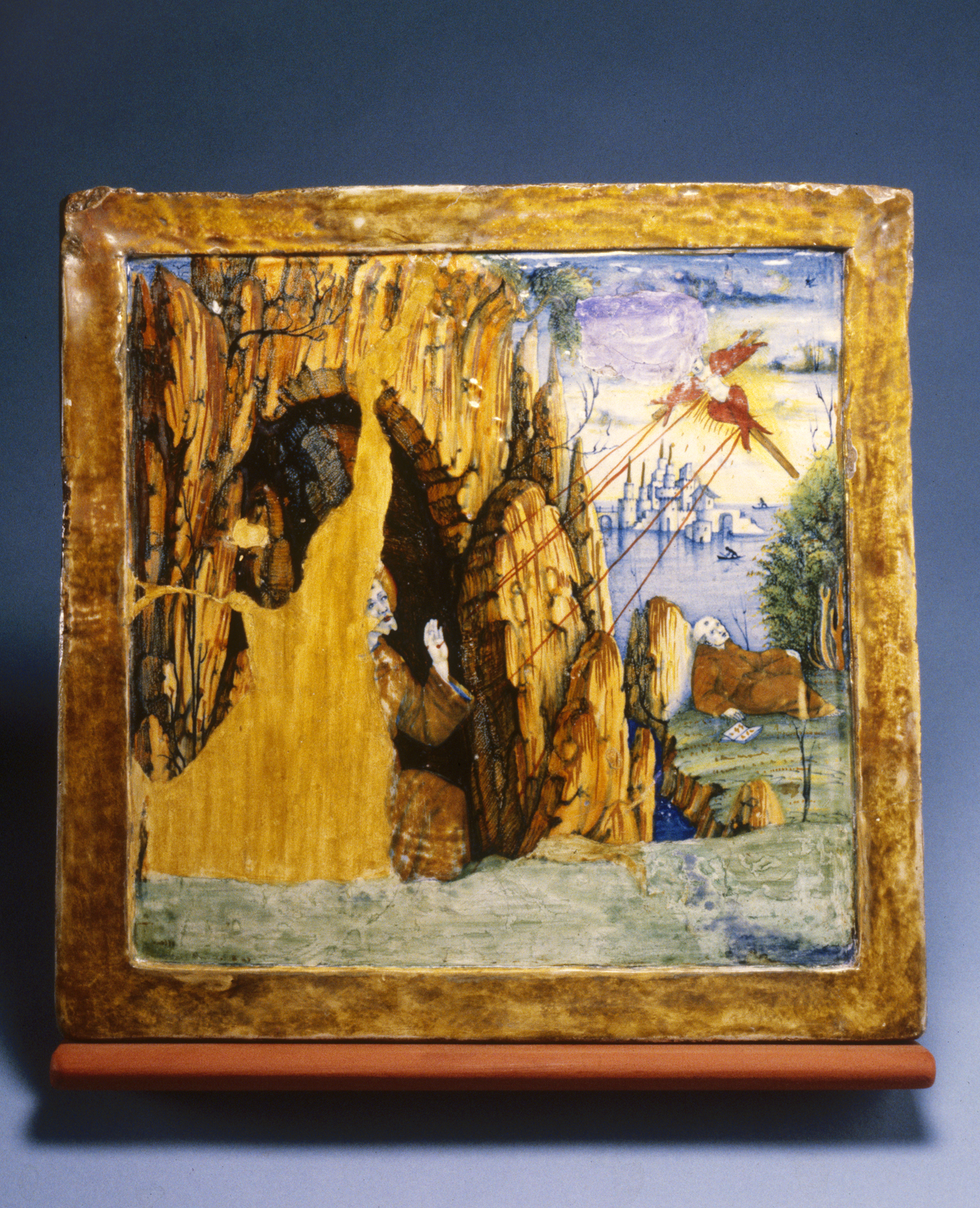Plaque with Saint Francis Receiving the Stigmata
(Renaissance Europe )
This plaque shows the popular subject of Saint Francis of Assisi receiving the stigmata—the wounds of Christ. In 1224, Saint Francis was in the mountains of Italy with a companion, meditating on the sufferings of Christ, and there he had a vision of a seraph (the highest order of angels) bearing an image of the crucified Christ. Afterwards, his hands, feet, and side were marked with wounds identical to Christ’s. In the background, his companion lays against a rock with a book, unaware of the miracle. The composition was probably derived from a Renaissance panel painting or fresco, as the stigmata of Saint Francis was frequently depicted by Renaissance painters (see for example, 37.544). Given Saint Francis’ devotion to imitating Christ’s pain and suffering, this plaque likely had a private devotional or votive purpose. The painter has not been identified. However, it is thought that the piece was likely produced in Gubbio. The surface is painted in gold and ruby luster, and is heavily damaged. The reverse is unglazed. For other examples of maiolica plaques, see 48.1315, 48.1377, and 48.1515; for more on “maiolica,” see 48.1336.
Provenance
Provenance (from the French provenir, 'to come from/forth') is the chronology of the ownership, custody, or location of a historical object. Learn more about provenance at the Walters.
Taylor [date and mode of acquisition unknown] [no. 111]; A. Seligmann, Rey & Co., New York [date and mode of acquisition unknown]; Henry Walters, Baltimore, 1916, by purchase; Walters Art Museum, 1931, by bequest.
Exhibitions
| 1982 | Harborplace Light Street Pavilion Special Display. Harborplace, Baltimore. |
Geographies
Italy, Gubbio (Place of Origin)
Measurements
11 7/8 in. (30.2 cm)
Credit Line
Acquired by Henry Walters, 1916
Location in Museum
Not on view
Accession Number
In libraries, galleries, museums, and archives, an accession number is a unique identifier assigned to each object in the collection.
In libraries, galleries, museums, and archives, an accession number is a unique identifier assigned to each object in the collection.
48.1517


